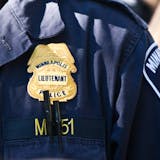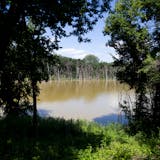DULUTH, Minn. - Researchers using GPS trackers and transmitters to find out what's causing the decline of northeastern Minnesota's moose population are getting some early results that show wolves are behind some of the deaths.
State wildlife experts recently tranquilized 111 moose to fit them with high-tech collars that send satellite messages if the animal stops moving for six hours. The goal is to get crews to the dead moose quickly to harvest organs and tissue to find out what killed them.
Six of those moose already have died and at least two appear to be wolf victims, Department of Natural Resources officials told the Duluth News Tribune ( http://bit.ly/XU4MiO) for a story published Monday. The four others are listed as having died of complications from the stress of being tranquilized and collared.
In a similar study of 19 moose collared by the Grand Portage Band of Chippewa, at least one animal died from a wolf attack.
Northeastern Minnesota's moose population has plummeted from 8,800 in 2006 to 2,760 this January, prompting the DNR to cancel moose hunting for the foreseeable future. Scientists are trying to determine why they're dying off. They suspect a combination of higher summertime temperatures; parasites such as brain worms and ticks; increased numbers of deer, which carry brain worms; diseases; aging forests that contain less food for moose; and possibly more wolves in the moose range.
The rate of "capture-related mortality" of about 3.6 percent is average for capture-and-collaring projects and is lower than in recent Minnesota moose studies, said Erika Butler, the DNR veterinarian in charge of the project.
"Any moose that dies within two weeks of capture is automatically counted as a capture-related mortality. . It may have been something else, but we count it as that," Butler said. "Some animals are weak going into it and just can't get back up. We don't like it, but it happens."
Of the two moose that appeared to be wolf victims in the DNR test, one had been mostly eaten while the other had injuries from a wolf attack but had not been eaten. It appears wolves got the big cow's calf and then left before the cow died, Butler said.


